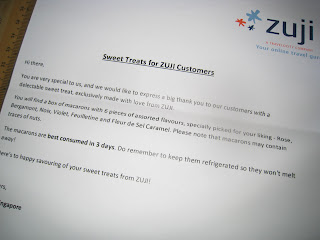The Singapore government has "imposed an Additional Buyer's Stamp Duty (ABSD) for private property of between 3 per cent and 10 per cent for Singaporeans, Permanent Residents and foreigners to moderate investment demand for private residential property and promote a more stable and sustainable market." Read article here.
This development is likely to hasten the weakening of private residential real estate prices which is something I expect to become really evident in 2014 or 2015. Weakness in the resale market would probably manifest itself markedly much earlier now.
Anecdotal evidence already shows that it is harder to find buyers in recent weeks. The ABSD which takes effect from tomorrow will likely cause weaker sellers to lower their asking prices.
In real estate investment just like in any investment, price is always a function of who is more enthusiastic, the seller or the buyer. Such enthusiam or the lack of it is the function of many contributory factors. How is the enthusiasm competition stacking up?
If we search Property Guru for listings of recently completed condominium projects, we would be amazed by how many are trying to sell their units. So, let us see The Trevista in Toa Payoh which recently got its TOP.
The Trevista has 664 listings under "units for sale" right now! Granted that many listings are probably repeated, let us say each unit has been advertised by 5 different property agents, it would still mean that 130 units or so are up for sale. There is no question that many bought private real estate as an investment in the last year or two.
Now, the more realistic investors would probably settle for lower selling prices. In the end, those who are unwilling to sell at lower prices must have holding power. What affects holding power? Rental and interest rates. Rental should be as high as possible and interest rates should be as low as possible. Of course, how much financial muscle one has to begin with is an important consideration too for obvious reasons.
The rental market has been softening, from what I hear. So, rents, in time to come, could provide diminishing comfort. With more residential real estate being completed over the next few years, lower rents are a realistic expectation.
Interest rate although widely expected to remain low until 2013 is a wild card from then on. With expectations of oversupply from 2014 onwards, the expiration of low interest rate at the same time would be a double whammy.
Good luck to all who are still heavily invested in private residential real estate in Singapore.
Latest update (CNA, 8 Dec 2011):
CEO of PropNex Realty Mr Mohamed Ismail said he expects a price correction of approximately 15 to 20 per cent in the central core region and a correction of 10 to 15 per cent in the mass market segment in the next six months. Read article: click here.
Related posts:
1. Money continues to flow into Singapore.
2. Should we be staying invested or in cash?







































